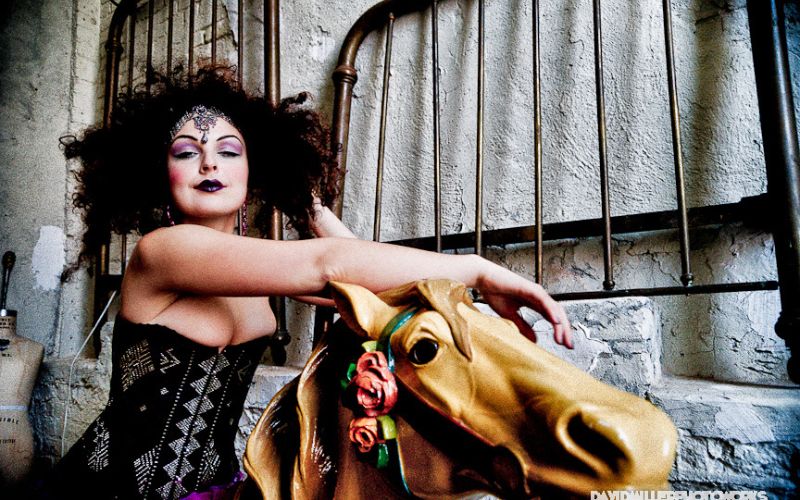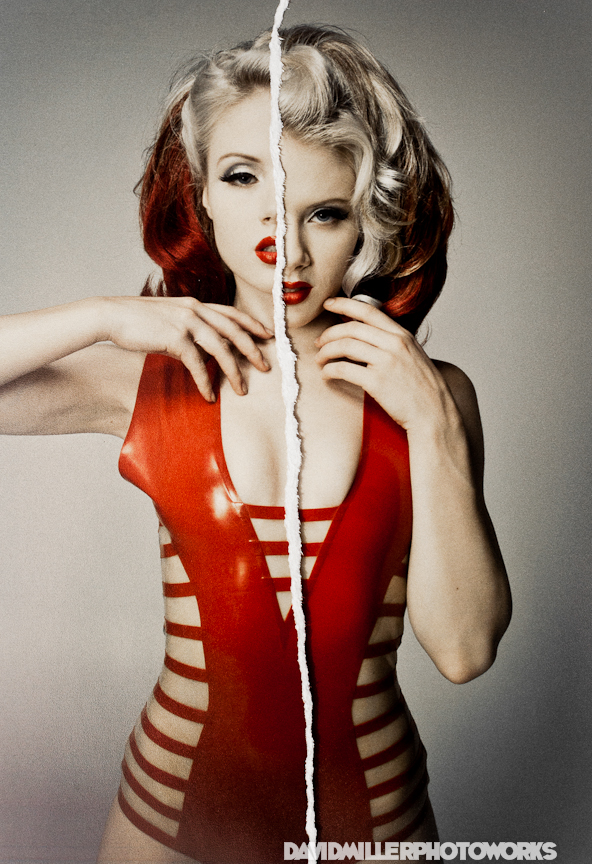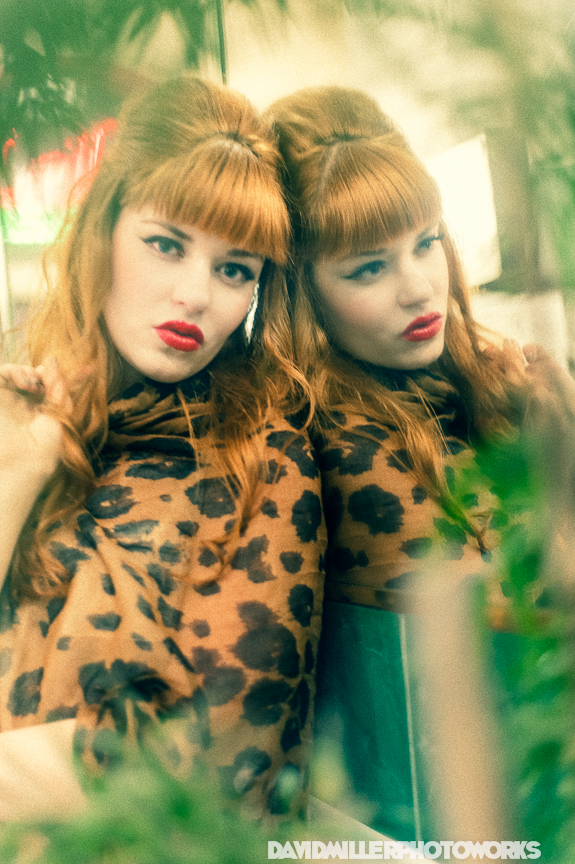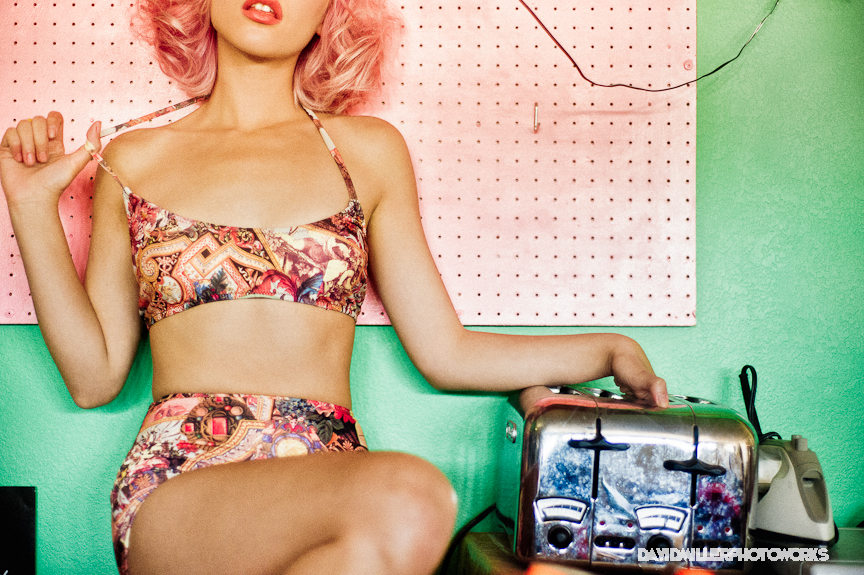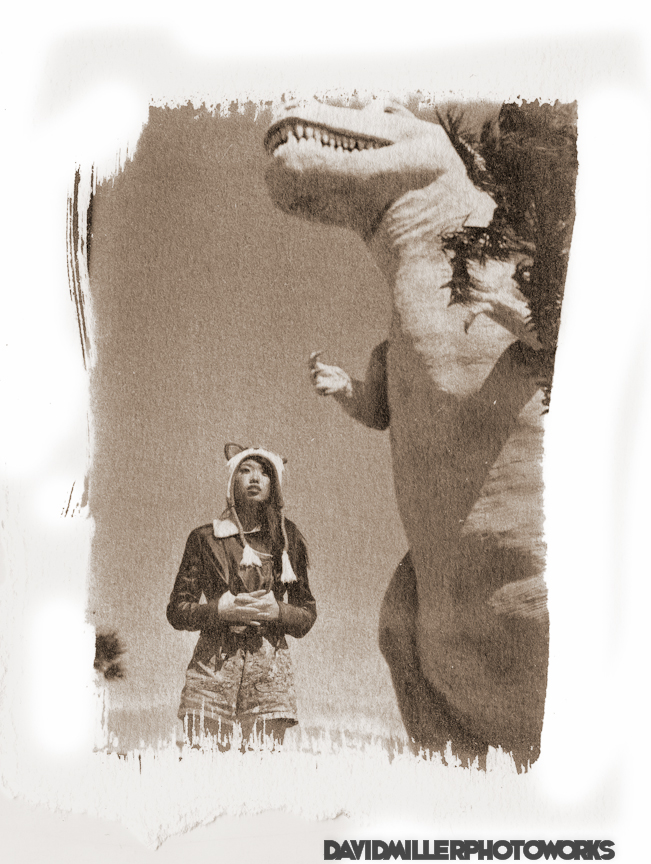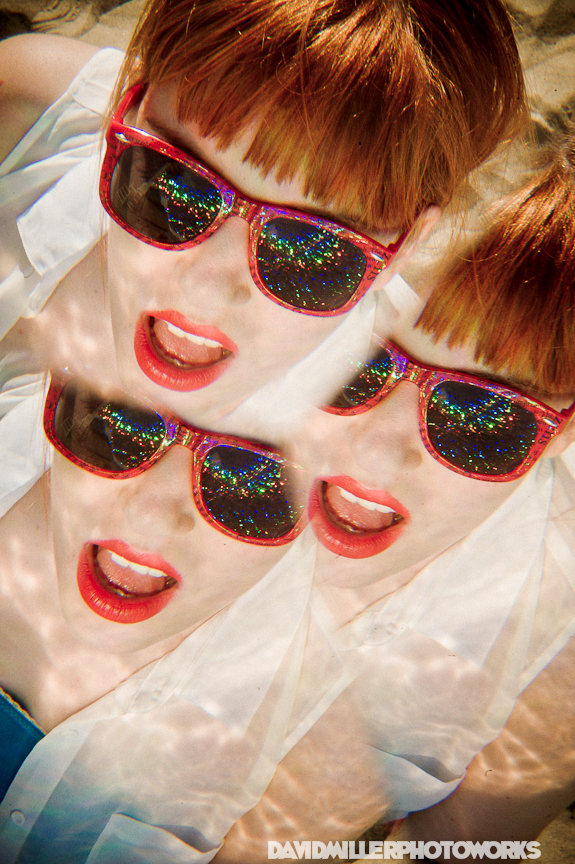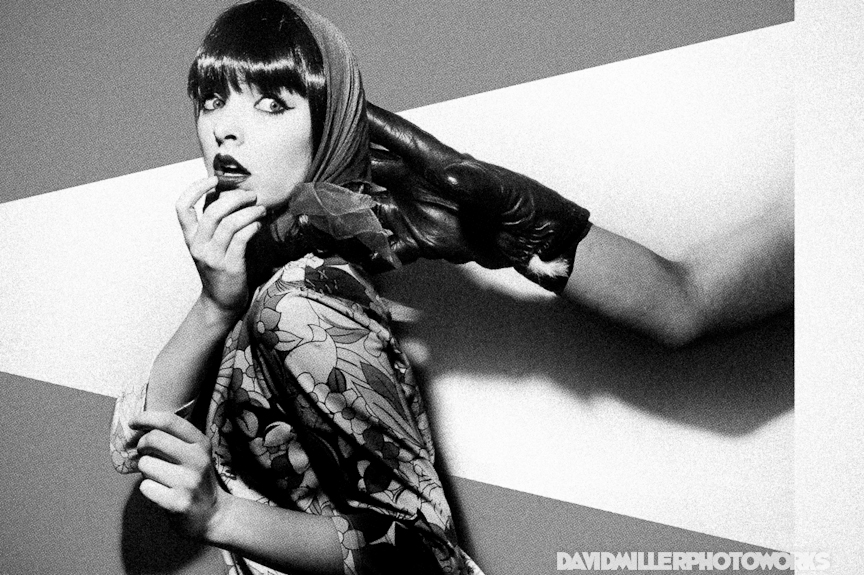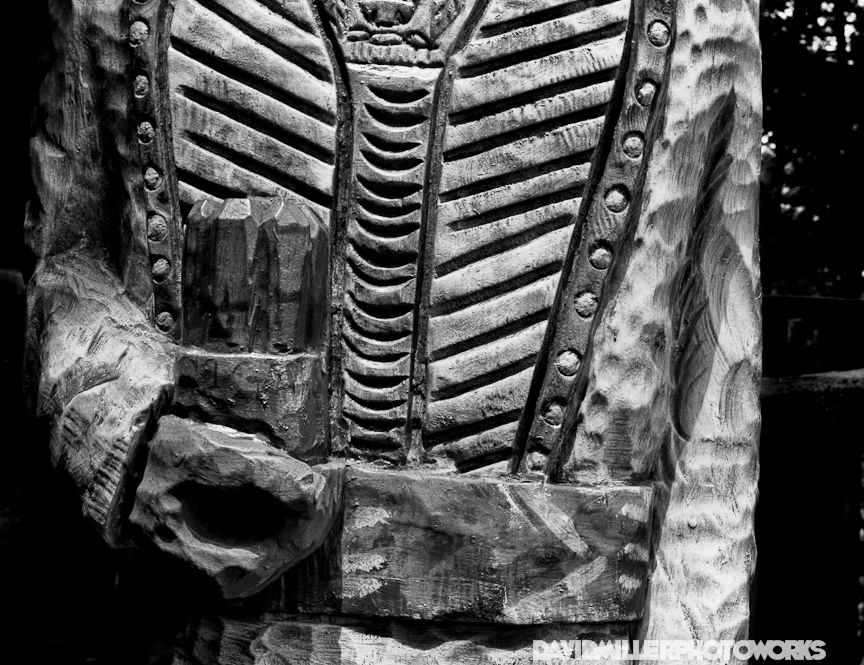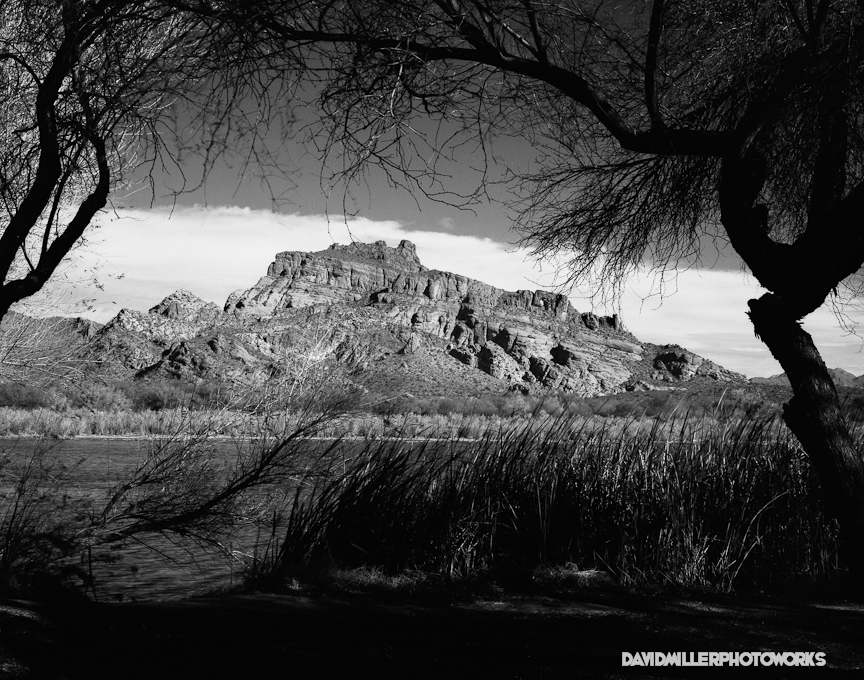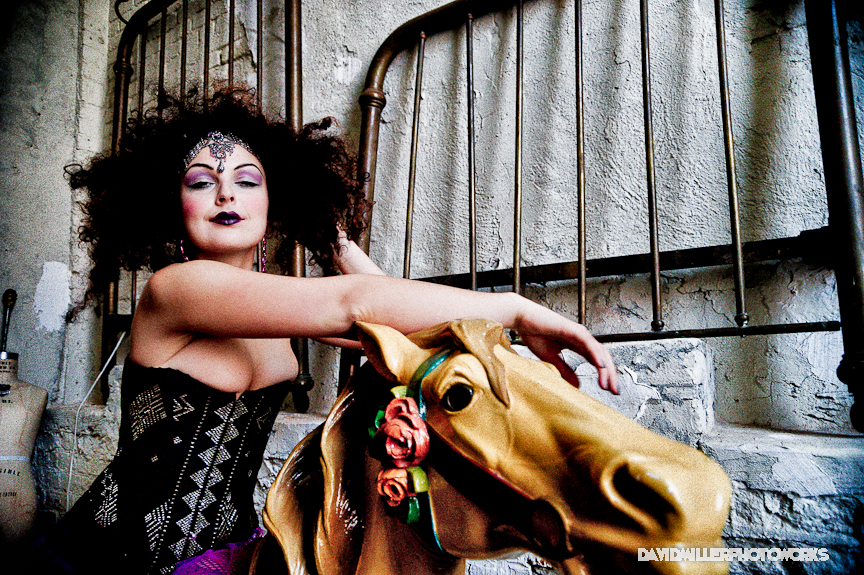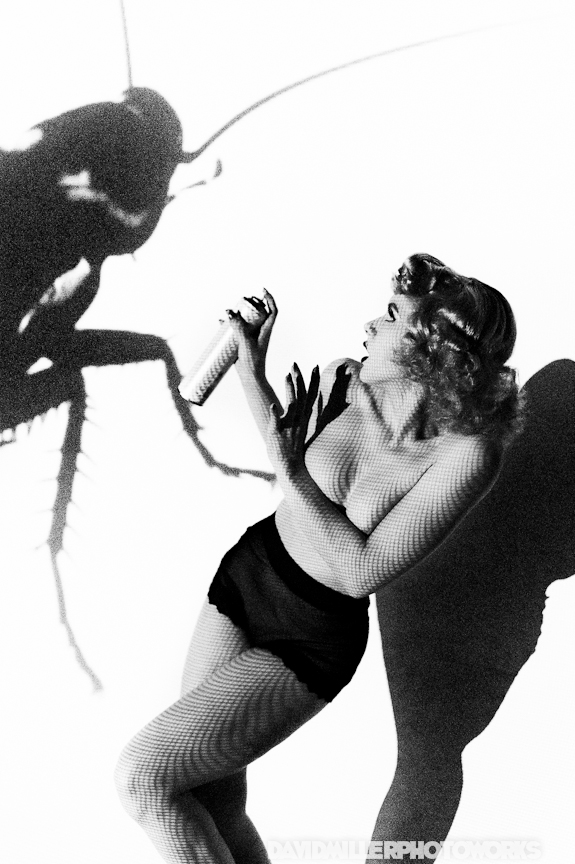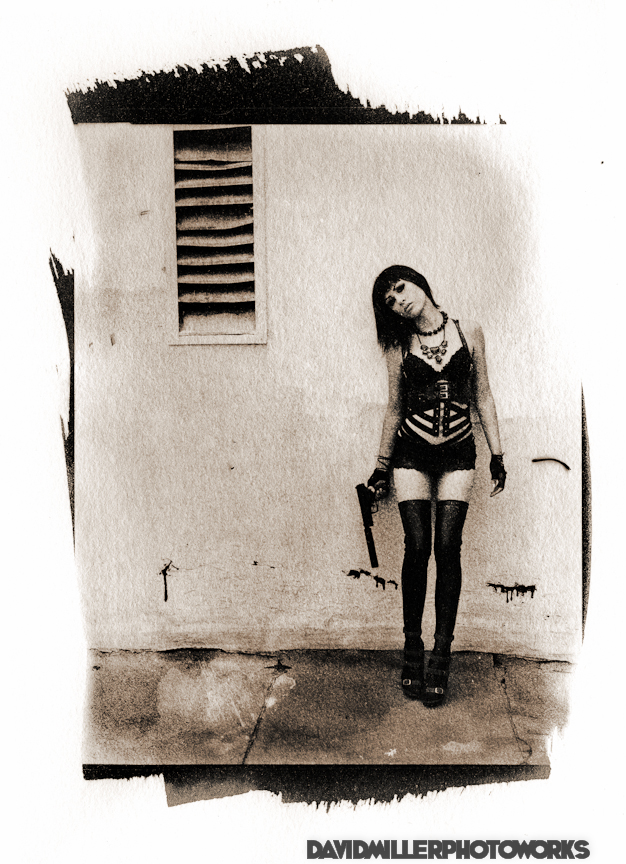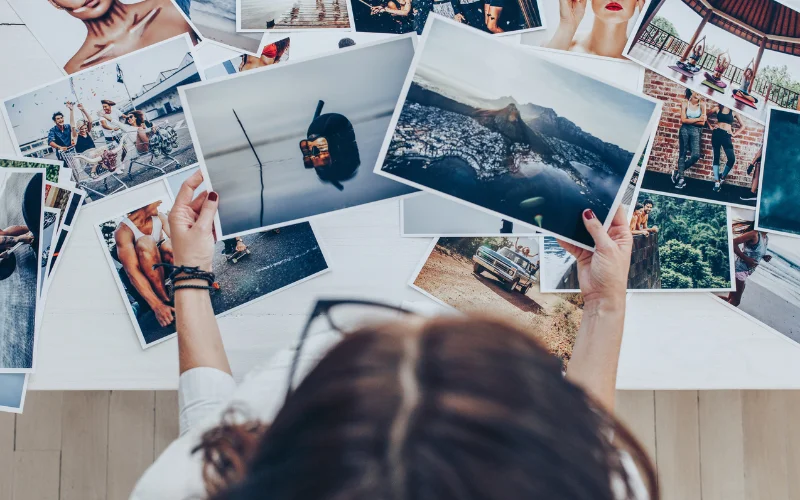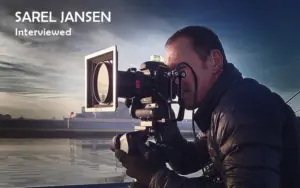David Miller is a photographer influenced by the 1980s, absorbed with its cultural landmarks: from golden age Hip-hop, the Muppets, and Star Wars to Japanese imports of Akira and Fist of the Northstar. Not surprisingly, David Miller’s work explores how these collages of images, sounds, and styles can be pulled for ideas and inspiration, or reconfigured into completely new forms.
He calls his approach Surreal Pop. He thinks it reflects the mentality of a kid who grew up in the 80s. Whether you grew up in the 80s or not, David Miller’s work has an ability to stun. He has been published in Orion, View Camera and B+W/ Color. Besides his commercial work and personal projects, he has also taught photography for the Mesa Arts Center and City of Chandler.
In this interview, David Miller gives an insightful look into how he develops his photo shoots, explains his method for working with those big 4×5 cameras, and why his childhood influences help his work.
You say that you take a surreal pop art approach to your photography. That this reflects the mentality of a child of the 1980s. Could you explain your approach and how growing up with Cheers, the Cosby Show, and Reagan affected your photography?
My childhood was all about the Muppets, Star Wars, comics, Teenage Mutant Ninja Turtles, He-Man, Transformers and GI Joe, ALF, Star Trek TNG, animes like Fist of the Northstar and Akira, stuff like that. This was when they allowed cartoons that were essentially commercials for the toys to be aired, which hadn’t happened before the 80s, so it really was a brainwashing that I haven’t been able to shake. Although I do like Cosby’s sweaters, the only sitcom to ever feature in my work is Married With Children. I had a model do her best Peggy Bundy impression, and I did 2 sculptures of Al and Peggy. You also had the golden era of hip-hop and electronic music using lots of sampling and collage sound and a few rock bands taking that up as well, and that liberal borrowing from other sources has always appealed to me. I make an effort to have added dimensions of mixed media, borrow from other sources or combine images in a deliberately unrealistic way.
Your “Pop” series highlights your surreal pop approach. There are great concepts at play. Could you explain your pre-production process? What goes through your mind when imagining a shoot?
I can tell you about a shoot I’m planning right now for next week. I met a designer in LA named Marcel Dejure who created this sort of mutant, Muppet fetish style clothes in a small cubicle in a gallery called The Hive. We talked about underground commix, Meet The Feebles, and his inspiration which came from going to industrial clubs and finding them comical. I had been talking off and on with a retro-ish fetish model, Rivi Madison, about a shoot and it seemed Marcel + Rivi would be a good mix. Because I like to have 2 models when I do a fashion shoot, I asked someone else I had worked with who had similar sizing to Rivi to join in. That model, Sophie Nova, had a lot of experience doing fetish and retro stuff yet still had a very pure, clean cut look to her.
Once I have my cast I can start stretching ideas of how to make it more than model + clothes, so I thought about Sesame Street’s walls and other Muppety things. Then I approached it from the fetish end, and there are two films that I think of when I think “industrial fetish,” and those are Akira and Tetsuo: Iron Man. One is an anime and the other is a body horror Japanese film, but both prominently feature someone having a metal appendage. There’s a guy on Etsy who sells kits to make enormous cardboard robot arms, which I bought for the shoot
Now, that’s 2 models and 2 giant robot cardboard arms, so I asked Marcel if it’d be possible to make a 2-headed costume so the models can be a 2 headed robot fetish model monstrosity. That’s where we are at right now. I’m assembling the arms and I am sure I’ll need to paint them and add machinery to make them more than “just something I bought off Etsy.”
That’s the general way most shoots go- talk to people with similar interests, get your cast, get your styling and props, do what you can to push boundaries and make memorable work. If anything reminds you of a movie or song or tv show or illustration, research that and discover what made those things appealing to you in the first place.
The seventh image in the “Pop” series features a model in a kaleidoscope effect. Did you plan on using this image beforehand? Or do you find images to play with in post-production?
That particular image was a prism filter which goes on the end of your lens and splits the image. The hologram reflection on her sunglasses was from a $2 hologram display board from Wal-Mart. The only post work on that was upping the contrast I believe. It’s usually better to know what you’re doing beforehand but when you develop good instincts ideas come freely during the shoot and during post production. Basically I have a small list of what I absolutely need to get and then shoot extra to play around with.
What is your workflow in post-processing? Do you find yourself looking for certain things to manipulate then go from there?
I use Lightroom for the majority of post work and Photoshop only for major surgery. In “Scream Queens” (top), the look I want involves making a halftone look via the bitmap mode, so I just repeat that process on each image shot for that series. Certain photos are set aside that I think would make good mixed media pieces, like the embroidery my wife Vesna does on some photos, so those get printed and handed off to her. Or frozen, or torn and reassembled, or painted on… then they get rephotographed for a final image.
For your “Deserted” series you found what seems like abandoned town to photograph. What was your process for exploring/scouting the town for spots to document? Did any pattern keep catching your eye?
I live in Arizona and spend a lot of time in New Mexico, and there’s a long tradition of large format photography of an idealized Southwest. What I actually see is a lot of tourism traps, military history, Native American history, WPA stuff, and there’s a lot of weirdness where those things intersect. Some of it is very beautiful and inspiring, some of it is very negative or creepy, and some of it is plain goofy, so Deserted is my casting off of the Ansel Adams interpretation. It’s very straight forward 4×5 view camera kind of imagery, except the only human representations are in caricatures of cowboys and Indians and paintings of Jesus and mannequins hanging from gallows or a stuff Yosemite Sam.
What advice would you give to other photographers that know they have a special object/location but can’t find a way of conveying it through the frame?
For the Deserted material I’m usually stuck on a tripod with a big 4×5 camera and maybe only 12 shots of film on me, so the whole nature of that process forces you to compose in a deliberate manner. What you see is maybe the only shot I took of that object or location with the view camera, but rest assured I have my DSLR and my phone and maybe a polaroid or plastic lomography camera with me. If you aren’t sure of how to shoot something, try multiple ways- do a panorama with your digital, get intimate details with your phone. I remember visiting the Eiffel Tower and shooting the same stuff on 3 cameras because I wasn’t sure what I really wanted when I visited.
You also teach several photography courses. After teaching, what core insights from your own work have you found yourself sharing the most?
The people I teach vary from retirees to young adventurous photo couples to moms who got their very first camera, and the most important thing is that they take pleasure in taking photos and not see it as some struggle with gear or lack of creativity. I would say a large portion of them walk in the class believing that the technical aspect of photography is the most important thing to learn and that’s the only thing stopping them from taking good photos. The technology is important, but that is the easiest thing to learn, and if you can’t learn it, there’s always the “program” mode, however people should first love photographing, be it their children or trips or the food they eat or whatever. It’s a means of expression for a lot of people who aren’t artistic in any other sense.
If you were to take your own Scream Queen photograph, what would you be screaming for? Insomnia personified? The Ghost of Copyright Infringement Past?
I would be screaming how pathetic and evil the NRA, and all politicians affiliated with them, are in our country. They actively fight for the continuing slaughter of children over any perceived inconvenience to the gun industry, and are as complicit with the murder of our population as any terrorist.
Be sure to check David Miller’s work on his website, blog, and facebook.
